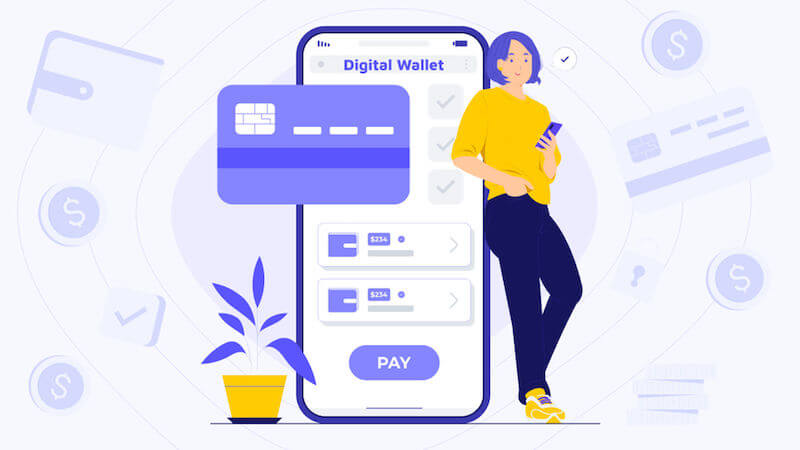Challenges of fintech payment platforms aren’t just buzzwords; they shape how we handle money every day. Think about how you pay for your morning coffee or buy online. That’s fintech smoothing out the bumps. But it isn’t all smooth sailing. In my boots-on-the-ground experience, the balance between innovation and security is like walking a tightrope. We all want transactions that are lightning-fast and smoother than silk, but at the same time, the thought of getting scammed sends chills down our spines, right? This is where the rubber meets the road. Let’s dive into this high-stakes dance and how avoiding a misstep is crucial for a fintech platform’s survival.
Understanding the Security Landscape of Fintech Payment Platforms
The Prevalence of Fintech Payment Security Concerns
Concerns about fintech payment security are real and big. Every day, hackers get smarter. They can steal money or personal info fast. So, fintech firms work hard to stay ahead. They use tough security to protect users’ money and data. Users want to feel safe. If they don’t, they won’t use the service. Trust is key.
Companies use special software to find fraud in fintech. They catch wrong payments before they go through. That’s good for keeping money safe. But hackers never stop trying. So, the software must keep getting better.
Effective Fraud Prevention Mechanisms in Digital Payments
Fraud prevention is very important in digital payments. Some ways to stop fraud include checking user identity carefully, and watching for strange activity. If a payment looks odd, the system can block it. This keeps users safe.
Companies also teach users how to protect themselves. They tell users to keep their password secret and to use secure networks. Plus, they learn how to spot scams. These tips help users stay one step ahead of the bad guys.
Digital wallets need good security, too. Wallets hold personal and payment info. This makes them a big target for thieves. Firms use strong tech like encryption. Encryption scrambles data so only the right person can read it.
Cross-border payments bring more challenges. Rules can be different in every country. Firms need to know these rules well to make safe payments. They must check who is sending and getting the money. This helps stop bad deeds like money laundering.
Making systems that can handle many users at once is also tricky. More people mean more chances for things to go wrong. But companies build strong systems. These systems can deal with lots of transactions. And they keep everything running smooth.
Fraud detection works day and night. It uses smart tech like AI to stop fraud. AI learns from past fraud to spot new risks. This helps keep money safe.
Every company knows that a single problem can ruin trust. So they work hard to stop any risk.
In the end, keeping e-payments safe is a tough task. But it’s one that fintech firms are ready to take on. For every new trick out there, they work to have an answer. The goal is always to keep users’ trust by making sure their money and identity stay secure.
Navigating the Speed and Reliability of Fintech Transactions
Addressing Fintech Transaction Speed Issues
Fast and smooth. That’s how we all want our money moves to go. But sometimes, fintech tools make us wait. This can sour user good vibes, fast. We’ve all been there: you pay for a coffee with an app, but the barista just stares. The payment wheel keeps spinning.
It’s not magic, but tech that avoids these hiccups. So, what slows down fintech transactions? It’s a mix of things: old systems, web traffic spikes, and even slow fraud checks. Anything that blocks the data flow in payments can hurt speed. Poor speed can mean users hightail it and never come back.
As a pro, I push for leaner, meaner fintech designs. That means slicker ways to move money. Quick checks on the fly to crush fraud, without a lag. And, we can’t forget about mobile users. Fintech must fly on phones too. So our focus on mobile must be sharp.
Enhancing Payment Gateway Reliability and Real-Time Processing
Ever clicked ‘pay’ and got ‘error’? It’s a bummer and shakes trust like nothing else. Payment gateways act as the bridge between money and merchant. If this bridge is flimsy, faith in fintech wobbles. Real-time processing is a game-changer. It whisks your cash to its spot in a snap. This speed wins hearts and minds.
But speed is just one part of the story. The other? Staying up when it gets tough. Peak times, like shopping bytes or folks paying bills all at once, test these systems. A tough system stays solid, no matter the load.
Let’s talk about money across borders. Moving cash across seas is tricky. Local laws, currency tiffs, and bank quirks can slow things down. It’s like watching a donkey race: slow and full of surprises. Fintech aims to speed this up, getting closer to a sprint. That’s real inclusion.
Here’s the scoop on user experience, folks. It’s more than looks; it’s how things feel, move, and flow. Lag or downtime? Users won’t stand for it. They’ll walk away, and they might never look back. They want to pay and play, without a hiccup.
And we can’t just fix our eyes on the now. Fintech’s got to be sturdy for the crowd. All day, every day. That means building a base that can grow. One that handles more cash, more users, without a blink.
We’ve got to balance the need for speed with iron-clad safety. It’s walking a tightrope, but we’re getting better. We find smarter ways to detect fraud, patch up mobile gaps, and keep user trust high. It’s the path to make fintech a no-worry choice for paying your way in a swift world.
We build trust brick by brick, payment by payment. It’s ongoing, it’s tough, but oh, it’s thrilling. Because when it all works, it’s like hitting the perfect note in a sweet harmony. Your coffee’s paid for before you’ve even finished your order. That’s the dream – and every day we’re coding and crafting, we’re making it more real.
Regulatory Compliance and Customer Trust in Fintech
Balancing AML Requirements and KYC Challenges
Fintech means fast, easy money moves. But it’s not all fun and games. We’ve got rules to follow. They’re called AML and KYC. They help us stop bad guys from doing bad money things.
AML stands for “Anti-Money Laundering”. It makes sure money’s clean, not dirty from crimes. Banks and fintech have to check this. They can’t let the bad money in.
KYC is “Know Your Customer”. It’s how we make sure we know who you are. It’s like when a friend comes to your door, you look to see it’s them before you let them in.
So how do we balance these? That’s the tricky part. We need to make sure you’re safe but also keep things speedy. No one likes to wait, right? Getting these checks right means you wait less and still stay safe.
For example, say you want to send money. We check it’s really you — that’s KYC. Then we make sure your money is for good stuff — that’s AML. It could be tough, but we’ve got tech and smarts to do it fast and keep it tight.
Building Customer Trust in E-Payment Systems Through Compliance
Trust is huge. Without it, nothing works. In fintech, we build trust by playing by the rules. The rules keep everyone’s money safe. Think of it like a game. If everyone knows the rules and follows them, we can all have fun.
When we talk about rules, we include stuff like keeping secrets — your secrets, like your card number or your buys. We keep them locked up tight. That’s part of digital wallet security measures. This way, no one gets a peek at your private stuff.
Mobile payment platforms are handy but can be tricky. They need to be locked up tight from hackers. Your trust in us means we have to work hard to keep them out.
We also need to keep fees fair, especially when you send money far away, like cross-border payments. No one likes tricks or last-minute costs added.
And we keep our promises. If we say your money goes through now, it goes through now. That’s our deal on real-time transaction processing.
In short, we care a lot about your trust. We show it by following all the rules and keeping things moving fast. You should feel safe every time you tap, click, or swipe. It’s our job to worry about the rules so that you don’t have to.
Regulatory stuff can be dull but it’s key. It’s what lets us all sleep at night, knowing our money is right where we left it. Building that trust — that’s what keeps us going.
Scaling Fintech Payment Technologies Amidst Growth
Overcoming Scalability of Payment Technologies Challenges
Growing a fintech firm means getting ready for more people using your service. Think of a small town growing into a big city. Roads and shops must get bigger and better to cope. It is the same with fintech and the tech behind it. More users mean we must make sure our tech can handle it. We call this scaling.
One big task is keeping things smooth when lots of people make payments at once. We look at the whole system and find spots that can’t cope with growth. Then, we make them stronger or switch to new tech that can handle more strain.
Security is also key when we scale up. More users bring more chances for fraud. People try to break the rules and steal money. We must stop them. We work on better ways to find and stop fraud before it hurts people.
When we fix these issues, we help people trust us more. They feel safe using our service. This means they will keep using it and tell friends.
Ensuring Interoperability in Mobile Payments for a Global Audience
Think of making a phone call to a friend across the world. You don’t worry about if your phone works with theirs. You just call. Mobile payments should be like that too. No matter where we are, or what phone we use, it should work. This is called interoperability.
To serve everyone, we make sure our tech can talk to other systems. Big or small, new or old. We work with partners everywhere. This helps us serve a global audience. We deal with different rules and ways of working around the world. But we find common ground. Just like people from different places find ways to get along.
Customers want to send money to family far away without a hassle. So we work to smooth out the tough stuff. We keep fees low and make sure the money gets there fast. And we always check that it’s safe and the right person gets the money.
For success, we keep learning and improving. We face new challenges head on. We always aim to make payment easy and safe for everyone, everywhere. This helps bring more people into the world of digital money. And in turn, they help us grow and get better.
Scaling and interoperability might sound tough. But think of the rewards. More people can join the digital economy. They can pay for things, save money, and support their families. We make sure they can do all this with trust and ease. That’s the goal.
We know the road ahead is long. But we are ready for it. We will keep making your digital payments fast and safe. All while we grow and welcome more people from around the world to join in.
We dove deep into the fintech payment world in this blog. We looked at safety issues and how to stop scams. Then we talked about making sure transactions are fast and reliable. Next, we tackled following rules and winning trust from customers. Lastly, we covered growing payment tech and keeping it universal.
As a pro in fintech, I believe that safe, quick, and trusty payment platforms are key. They must grow well and meet global needs. Remember, building a fintech that ticks all these boxes isn’t simple, but it’s vital. It’s what makes users feel secure and keeps them coming back. It’s what makes a fintech service not just good, but great. Keep this in mind, and you’ll be on the right track.
Q&A :
What are some common security concerns with fintech payment platforms?
Fintech payment platforms are rapidly becoming mainstream, but as with any digital transaction system, concerns about security are paramount. Users and providers alike worry about the potential for fraud, data breaches, and unauthorized transactions. Ensuring robust encryption and implementing stringent authentication measures are key to safeguarding user data and maintaining trust in these platforms.
How do fintech payment platforms cope with regulatory compliance?
Fintech firms must navigate a complex maze of financial regulations that can differ by region and country. Staying compliant involves adapting to continuous changes in anti-money laundering (AML) laws, Know Your Customer (KYC) regulations, and other financial service rules. Payment platforms must invest in compliance strategies and technologies that can adapt to evolving regulatory environments.
What scalability challenges do fintech payment platforms face?
As a fintech payment platform grows, it can encounter scalability issues, such as the ability to handle increased transaction volumes without performance dips, sustain quality customer service, and manage the expanding infrastructure costs. Platforms need to have scalable architectures and consider cloud-based solutions to effectively manage growth and peak loads.
How do fintech payment platforms ensure a seamless customer experience?
With the user experience being crucial for retention and growth, fintech payment platforms must prioritize a frictionless interface. This includes minimizing payment processing times, providing intuitive navigation, and ensuring compatibility across various devices and operating systems. Continuous improvement based on user feedback and testing is essential for maintaining an optimal customer journey.
What are the interoperability challenges for fintech payment platforms?
As the financial technology landscape becomes increasingly crowded, a significant challenge lies in ensuring payment platform interoperability among various services and banking institutions. This would facilitate smoother transactions across different networks. Creating standard protocols and APIs while maintaining security is critical to achieving seamless interaction within the broader financial ecosystem.






